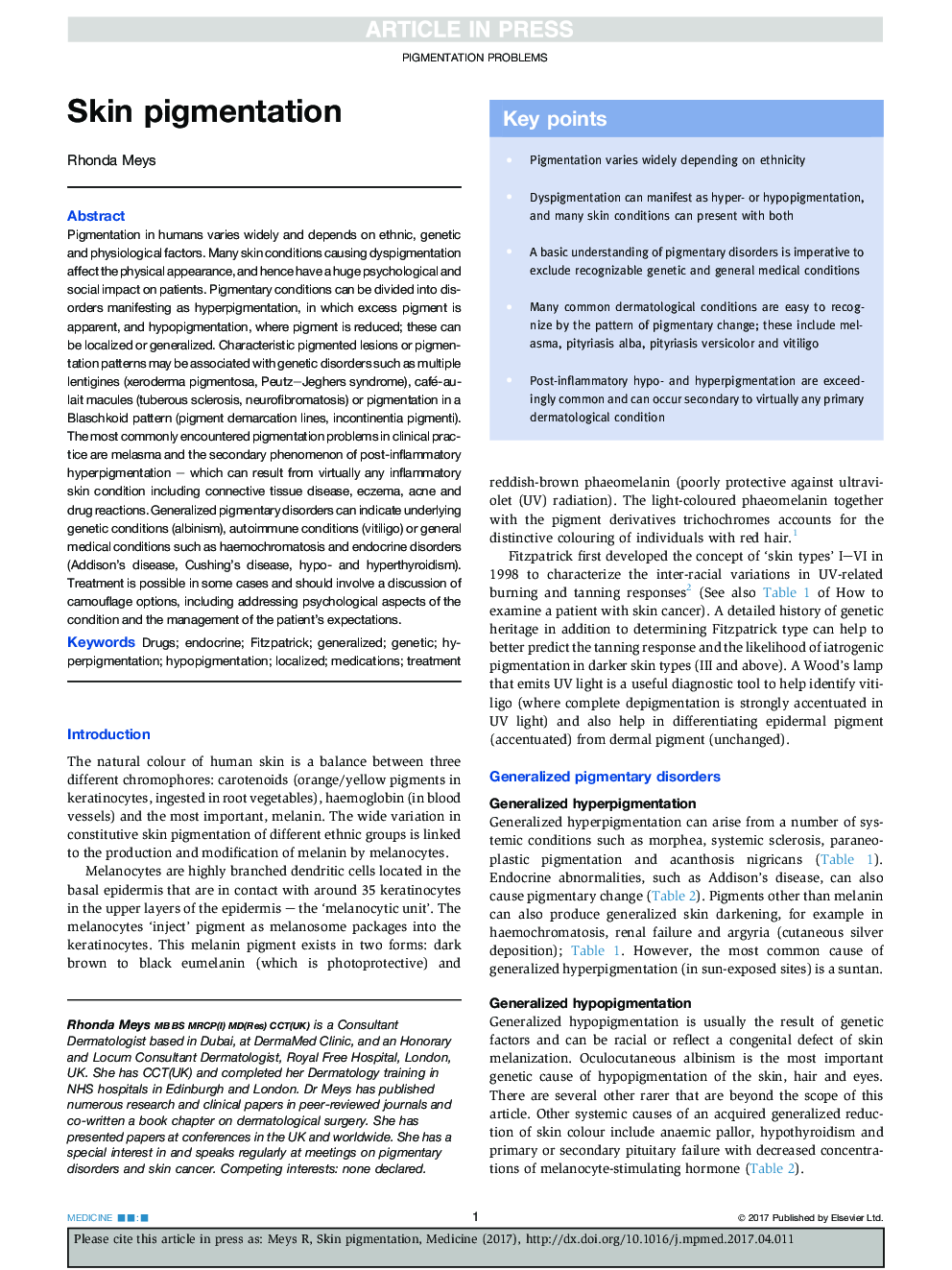| Article ID | Journal | Published Year | Pages | File Type |
|---|---|---|---|---|
| 5681193 | Medicine | 2017 | 6 Pages |
Abstract
Pigmentation in humans varies widely and depends on ethnic, genetic and physiological factors. Many skin conditions causing dyspigmentation affect the physical appearance, and hence have a huge psychological and social impact on patients. Pigmentary conditions can be divided into disorders manifesting as hyperpigmentation, in which excess pigment is apparent, and hypopigmentation, where pigment is reduced; these can be localized or generalized. Characteristic pigmented lesions or pigmentation patterns may be associated with genetic disorders such as multiple lentigines (xeroderma pigmentosa, Peutz-Jeghers syndrome), café-au-lait macules (tuberous sclerosis, neurofibromatosis) or pigmentation in a Blaschkoid pattern (pigment demarcation lines, incontinentia pigmenti). The most commonly encountered pigmentation problems in clinical practice are melasma and the secondary phenomenon of post-inflammatory hyperpigmentation - which can result from virtually any inflammatory skin condition including connective tissue disease, eczema, acne and drug reactions. Generalized pigmentary disorders can indicate underlying genetic conditions (albinism), autoimmune conditions (vitiligo) or general medical conditions such as haemochromatosis and endocrine disorders (Addison's disease, Cushing's disease, hypo- and hyperthyroidism). Treatment is possible in some cases and should involve a discussion of camouflage options, including addressing psychological aspects of the condition and the management of the patient's expectations.
Keywords
Related Topics
Health Sciences
Medicine and Dentistry
Medicine and Dentistry (General)
Authors
Rhonda Meys,
